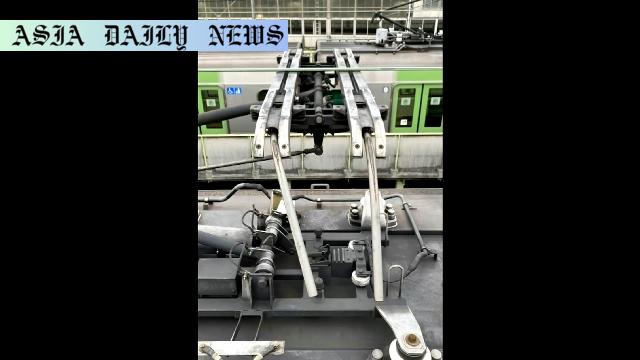Yamanote Line: Full suspension caused by broken overhead wires affecting 249,000 commuters; services resumed after thorough checks.
Broken overhead wires caused the suspension of Yamanote Line services in Tokyo.
249,000 commuters affected due to 176 canceled trains.
Electrical discharge observed from train pantographs initiated the investigations.
Damaged pantographs and wires found near Shimbashi Station.

Major Service Halt Due to Electrical Failures on the Yamanote Line
The well-known Yamanote Line in Tokyo faced a significant disruption as services were suspended due to damaged overhead wires. The situation unfolded on Thursday night when a train conductor reported an electrical discharge from a train’s pantograph. East Japan Railway Company (JR East) promptly initiated an investigation and discovered bent pantographs and broken overhead wires. This incident not only disrupted the outer loop but also forced a halt to the inner loop operations, leaving commuters stranded.
Extent of the Chaos: Trains Canceled and Commuters Affected
The suspension of services culminated in the cancellation of 176 trains, inconveniencing approximately 249,000 passengers. This widespread disruption caused immense challenges for commuters relying on the Yamanote Line for their daily travel. Further investigations revealed that 20 out of 50 trains operating on this line suffered damage to their pantographs due to the broken wires making contact. Additionally, the Keihin-Tohoku Line, which usually serves as an alternative, was also partially suspended in some sections, exacerbating the travel chaos during Tokyo’s morning rush hour.
Cause and Response: Identifying the Problem and Restoring Services
The overhead wires near Shimbashi Station were identified as the source of the issue. After thorough inspections and repairs through the night, JR East managed to restore the Yamanote Line services in both loops by approximately 8:30 a.m. Friday morning. While the resumption of operations is commendable, the level of disruption showcases the critical need for routine maintenance and effective communication strategies to minimize commuter inconvenience during such incidents.
The Larger Impact: Lessons for Urban Transit Systems
The incident highlights vulnerabilities in Japan’s otherwise highly efficient transportation infrastructure. Maintaining such systems requires rigorous inspection and preemptive action to prevent situations like these. Parking the entire Yamanote Line—a critical artery of Tokyo’s transport system—had a ripple effect on other lines and modes of travel. JR East should take away crucial lessons from this experience to reinforce resilience against similar infrastructural setbacks to ensure smoother operations in the future.
Conclusion: Moving Forward after the Yamanote Line Incident
As the Yamanote Line service slowly returns to normalcy, this disruption serves as a reminder of the importance of maintaining infrastructure and readiness for emergencies. For a city like Tokyo, where public transport forms the backbone of daily movement, ensuring minimal downtime during such setbacks is crucial. Future preventive measures, technological upgrades, and emergency response mechanisms will play a critical role in safeguarding commuter trust and operational efficiency for JR East and other urban transit systems in Japan.
Commentary
Understanding the Scale of Disruptions
The suspension of the Yamanote Line underscores the challenges that even a well-maintained rail network like Japan’s can face. With over 249,000 commuters affected, the disruption not only inconveniences individuals but creates a ripple effect on the city’s overall productivity. Urban rail systems must prioritize maintenance to address wear and tear in essential components, such as overhead wires and pantographs, to prevent such massive disruptions.
Challenges in Managing Public Transport Emergencies
A key takeaway from this incident lies in the response and communication during emergencies. While JR East’s overnight repairs and service restoration are commendable, commuters may still feel dissatisfied with the lack of alternatives during the downtime. Expanding communication channels and real-time updates through digital platforms could help passengers navigate these disruptions better. Strategies like deploying additional buses or guiding passengers to nearby lines could minimize the impact during peak hours.
The Ever-Evolving Needs of Urban Transit
The Yamanote Line forms a vital arterial loop encircling Tokyo’s major stations and areas, making its smooth operation critical for the city’s functionality. This incident emphasizes the need to incorporate newer technologies, like AI-based predictive maintenance systems, to identify potential breakdowns before they occur. Such technologies could help detect weak spots in overhead wires and other infrastructure components, allowing timely interventions.
Looking Forward: Enhancing Resilience in Transport
As global cities grow and transportation systems become more complex, incidents like these provide a learning curve for urban planners and operators. This serves as an opportunity for JR East and other rail operators to explore sustainable, durable technologies and procedures to ensure resilient transit systems. Building trust among passengers will require not only swift responses but also transparent communication and assurances for the future.


